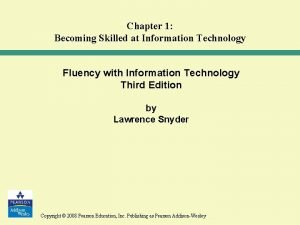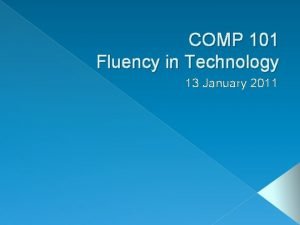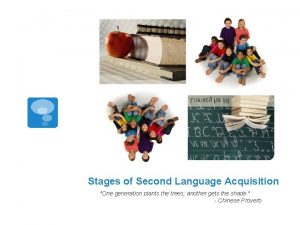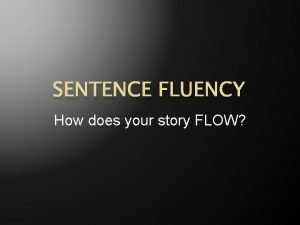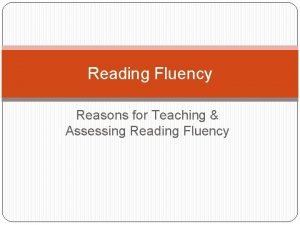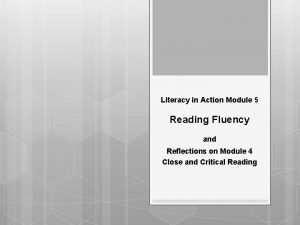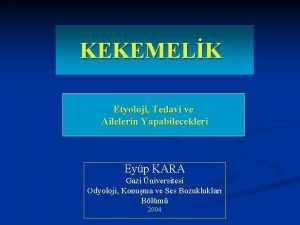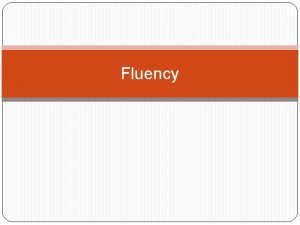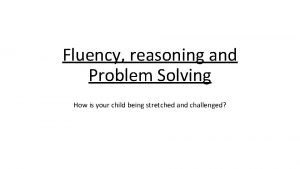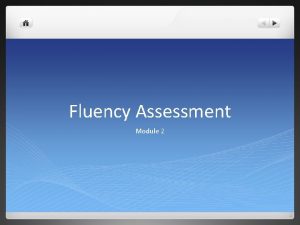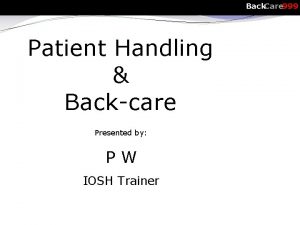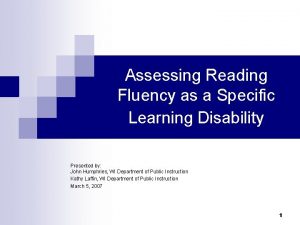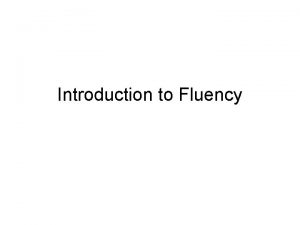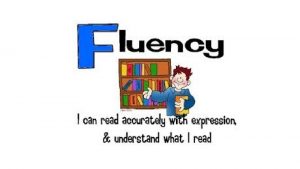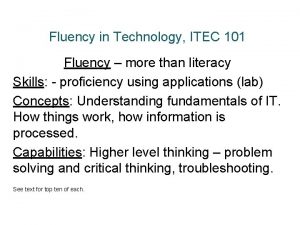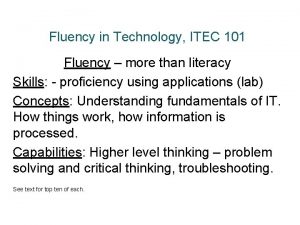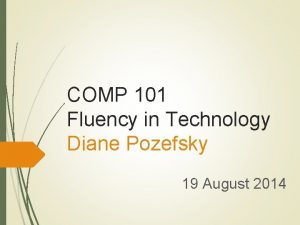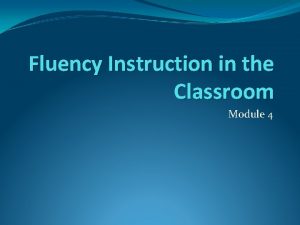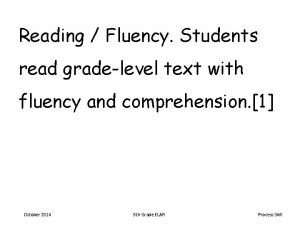COMP 101 Fluency in Technology 13 January 2011






















- Slides: 22

COMP 101 Fluency in Technology 13 January 2011

Agenda � Introductions › Who am I? › Who are you? � Logistics � What is technology fluency and why should you care? � Browsers, servers, software

Logistics The source of all information: http: //wwwx. cs. unc. edu/Courses/comp 101 -s 11/ � Important: � › Laptops everyday › Keep up with the little things OFFICE HOURS � Software � › Open source › Microsoft Office � NO TEXT

Grading Policy � Late Policy › 3 free days › Extra credit if left at end � Redos › 7 days from grade return

What this course is about � How to communicate data and information in today’s technologies � To be comfortable with the underlying principles � To learn to think quantitatively

Course Goals � Demystify computers Fear is the main source of superstition … To conquer fear is the beginning of wisdom. - Bertrand Russell (1872 – 1970) � Skills to use computers and especially › Web pages › Spreadsheets

Want to create � Artifacts usable by people as well as computers › Working isn’t enough! � Solutions to complex problems › More than one step

Why you should care � Challenge: › Name a field that has not been or will not be impacted by technology � Reality: › Future leaders will be those with the vision to embrace and harness technology. › Do you want to lead, follow or get left behind?

Course Methodology � Just do it! � As you learn new skills, we’ll delve deeper › Don’t do things that you don’t understand! � New tools … that you can always use

What is the Internet? � The machines � The connections � The content

The Internet in 1980

The Internet Circa 1998

Two Types of Computers � Servers: contain information to share � Clients: machine with a web browser to access that information Web Server Pages Browser Server Client

The Browser BROWSER software on your machine (client) > interprets instructions to display a web page > usually retrieves web page from server BROWSER: Web page processor (software program) Instructions Text

Web Pages � Text file that says what to display › Web pages use HTML (Hyper. Text Markup Language) �a little history � Two types of information › Instructions on how or what to display › Text (the data) � Instructions are in the form of tags › < command > � Do NOT need any special tools to build › BUT tools can make it easier

General Structure: HTML Page <html> <! --- most important item in head is the title --- > <head> <title>Put your title here</title> </head> <! --- body is where the “good stuff” is --- > <body> What will appear on the page Here … and there </body> </html> WARNING: This is not a complete page.

Anatomy of a URL � Protocol: HOW server-name/file-to-display WHERE WHAT � Protocol: usually http � Have you ever seen others? https? telnet? ftp? � Server-name � The computer’s name Usually begins with www Usually ends with 3 characters that define the kind of site � However, there are no rules: as long as its registered, you can get there � File-to-display � Can be a whole path (just like Windows)

Choosing Tools � Very fancy tools exist › Ease of building vs. Control › Cost � We will use an editor that help you get it right � We will NOT use tools that hide what you are doing � We will use Komodo Editor

Why Learn HTML? Mainly, to demystify � But more than that -- even if using a package � Sometimes you … › can’t figure out how to make it do what you want › can’t figure out what is wrong › just want to make some minor changes � If you understand how it works, YOU are in control �

Sharing Web Pages � Using Komodo Editor creates a web page on your machine › You can use the browser to look at it � But who else can see it? › NOBODY � Want it to be on a SERVER › UNC provides: ISIS

UNC Site � UNC website › Everything that is going to be available on the web must be in your public_html folder › Treats index. html as your home page › Default is “This page is blank” � Creating WWW Pages at UNC-CH › http: //help. unc. edu/? id=108

How to Transfer � UNC discusses sftp (Windows) and fetch (Mac) � We will use Filezilla � Why? › Simpler interface › Cross platform
 Fluency with information technology
Fluency with information technology Information technology fluency
Information technology fluency Comp 101 unc
Comp 101 unc Stages of learning acquisition maintenance generalization
Stages of learning acquisition maintenance generalization Speech emergence examples
Speech emergence examples What is sentence fluency
What is sentence fluency Woodcock johnson iv subtests
Woodcock johnson iv subtests Word reading accuracy
Word reading accuracy Fountas and pinnell fluency rubric
Fountas and pinnell fluency rubric In the poem watch me grow to what is reading compared
In the poem watch me grow to what is reading compared Precision fluency shaping program review
Precision fluency shaping program review Multidimensional fluency scale
Multidimensional fluency scale Van riper tekniği
Van riper tekniği Intercultural fluency
Intercultural fluency Functional fluency
Functional fluency Accuracy and fluency
Accuracy and fluency Problem reasoning
Problem reasoning Reading fluency checklist
Reading fluency checklist Fluency friday
Fluency friday Cbm reading fluency passages
Cbm reading fluency passages Preschool fluency activities
Preschool fluency activities Fluency mnemonic manual handling
Fluency mnemonic manual handling Definition of reading fluency
Definition of reading fluency

